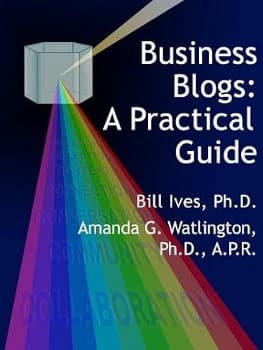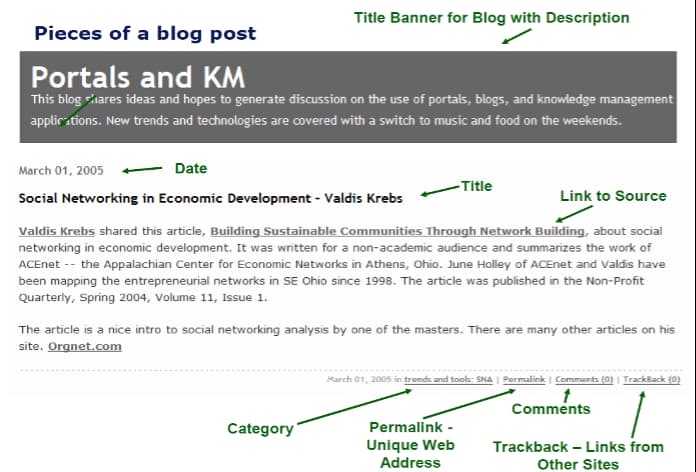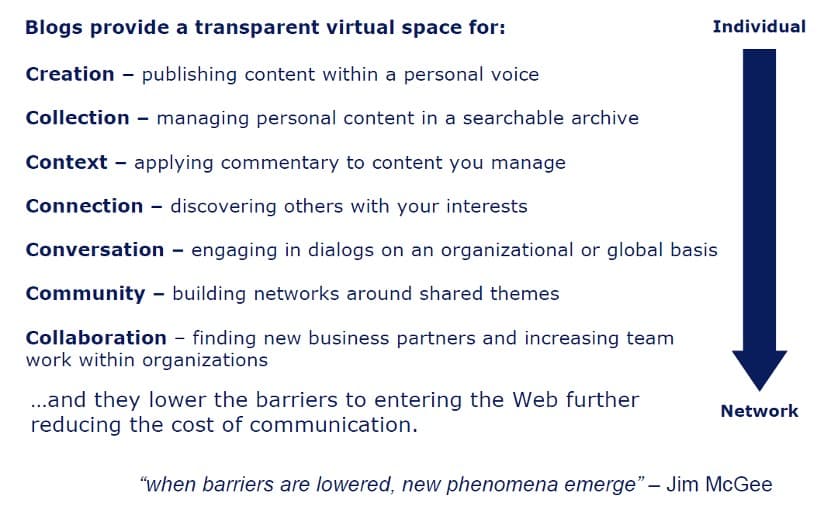Lucidea’s Lens: Knowledge Management Thought Leaders Part 84 – Bill Ives

Stan Garfield

The late Bill Ives was one of the earliest and most prolific bloggers writing about knowledge management, Web 2.0, and social media every weekday.
On the weekends, he wrote about food, music, and art. Bill specialized in business uses of Enterprise 2.0 tools, knowledge management, employee portals, performance support, learning, workforce performance strategy, and social business.
Bill began his career as a research psychologist at Harvard looking at the effects of media on cognition. He then spent over 25 years in business consulting covering learning, knowledge management, and portals. He was the former Knowledge Management Practice Lead for Accenture.
Book

Portals and KM: Beware: BYOA May Rival BYOD as IT Issue
There has been a lot of discussion about the BYOD movement (Bring Your Own Device) where people are getting their own smart phone and/or tablet. Well, I think the complementary to that may be just as big. This opinion is not based on any research, just a number of conversations I have had recently. Now I am certainly not claiming to be the first to raise the issue of people bypassing IT to use apps from the consumer Web or elsewhere, I am just suggesting a label to help focus the issue and put it parallel to BYOD. I Googled it and did not find anything. So maybe you first heard the term here?
One example is when IT invests in an expensive document sharing system and employees use Google Docs on their own instead. Yammer got some of its early users this way. One problem becomes security, but another is the chaos that can result from the uncommon data structures of the different tools. I think IT and even business unit leaders need to be worried here. I could raise more difficulties than BYOD. However, just like BYOD, you cannot really legislate this away. Employees can vote with their digital “feet” if you do not give them the tools they want. The best solution is to involve employees in apps decisions and deployments. This has always been a best practice, but it is even more important now.
Big-Time Blogging
Blogs and content aggregators are lead players in a new generation of tools that promise greater ability to create, distribute, and access Web content. The two also happen to have a symbiotic relationship: Blogs make content creation more accessible, and aggregators give greater control to readers of the ongoing proliferation of Web-based content. These tools are gaining attention in the media and the marketplace and hold great promise to transform the way the Web works. They are also starting to make inroads within corporations as collaborative and content management tools that can be used in conjunction with existing systems or as replacements.
Blogs have been around in some form or another since the birth of the Web. When the first blog-specific tools were introduced in 1999, only a few blogs existed. A year ago there were about 300,000, and now there are more than 3 million. Blogs have passed the tipping point, with Technorati reporting that about 15,000 new ones pop up every weekday. Celebrities and politicians are blogging, and Forbes magazine now rates the top blogs in multiple categories. Organizers of the Democratic National Convention issued press credentials to bloggers, and at press time the Republicans were considering the possibility.
Blogs are taking hold within corporations as well, especially in the technology sector. Microsoft employees have created more than 700 of them to facilitate communications with customers outside the firewall. IBM developed Blog Central to enable its employees to create blogs inside the firewall, and thousands have responded. Some IBM employees even have separate blogs for each side of the firewall.
Blogging Basics
Blogs are both a technology and a way of communicating. On the one hand, they are nothing more than simple Web sites, often published in the form of a journal, that provide original content, links to other relevant content, simple editing features, comment capability, archiving, search, and security options. This ease of use provides a vehicle for the writer’s unedited personal voice, which is considered a defining aspect of blogs. While many uses beyond personal journalism have emerged, the individual voice remains a central characteristic, even in the corporate setting.
Blogs also can enable a greatly enhanced personal knowledge management system for individual employees. In many large organizations there is an official enterprise document repository. However, the so-called good stuff is often on the individual hard drives of thousands of employees, and so is inaccessible to others. Just as blogs can bring a personal touch to customer communications, blog-based personalized content management could provide employees with what they really want: the best content from respected colleagues, complete with context.
Building Bloggers
Though the potential of blogs and aggregators is tremendous, these tools don’t make sense for every organization, particularly those in which central control over content is a major concern. For now, they are best suited for companies or institutions where innovation is a goal, and the serendipitous discovery of information is desired. Blogs and aggregators can also work well in situations where information needs to be distributed, commented upon, searched, and made easily available for later use; email, instant messaging, and standard Web sites do not allow for this combination of capabilities.
For businesses or divisions in which community building is an objective, such as developer networks, cross-functional collaboration teams, research groups, or customer user groups, blogging tools deliver ideal capabilities. By the same token, individual and group control must be acceptable, and even desired, for blogging to work in a corporate setting. In addition, the personal voice must be seen as a good thing, whether to form a more direct connection to customers or to allow for more meaningful discussions within the firewall.
Blogs and aggregators are also easy to integrate with existing portals. Because blogs publish their content in XML as an RSS feed, components can be easily placed within a portal to display recent content from a selection of blogs. Because they are published as Web pages, blogs can be searched using standard tools. However, to encourage the personal tone of blogs, those belonging to individuals should be differentiated from corporate content systems with extensive editorial monitoring and control. The opportunity and responsibility this provides is a crucial motivator for the effective use of blogs by employees.
What Blogs and Wikis Bring to Bring to Business and KM



Stan Garfield
Dive into Stan’s blog posts offering advice and insights drawn from many years as a KM practitioner. You may also want to download a free copy of his book, Lucidea’s Lens: Special Librarians & Information Specialists; The Five Cs of KM from Lucidea Press, and its precursor, Proven Practices for Implementing a Knowledge Management Program. Learn about Lucidea’s Presto, SydneyDigital, and GeniePlus software with unrivaled KM capabilities that enable successful knowledge curation and sharing.
**Disclaimer: Any in-line promotional text does not imply Lucidea product endorsement by the author of this post.
Never miss another post. Subscribe today!
Similar Posts
Lucidea’s Lens: Knowledge Management Thought Leaders
Part 110 – Tom Stewart
In this Lucidea’s Lens profile Stan Garfield spotlights Tom Stewart—strategist author and former HBR editor—whose groundbreaking thinking redefined intellectual capital.
Lucidea’s Lens: Knowledge Management Thought Leaders
Part 109 – Dave Snowden
Dave Snowden Founder of The Cynefin Company applies complexity science anthropology and narrative to help organizations make sense of uncertainty and change.
Lucidea’s Lens: Knowledge Management Thought Leaders
Part 108 – George Siemens
In this edition of Lucidea’s Lens Stan Garfield profiles George Siemens—pioneering voice in connectivism and a driving force behind MOOCs and learning analytics—whose work continues to reshape how we understand learning knowledge creation and the role of technology in education and professional development.
Lucidea’s Lens: Knowledge Management Thought Leaders
Part 107 – Arthur Shelley
Explore Arthur Shelley’s insights on leadership co-creation and knowledge strategy through curated works that showcase his expertise in collaboration and innovation.







Leave a Comment
Comments are reviewed and must adhere to our comments policy.
0 Comments